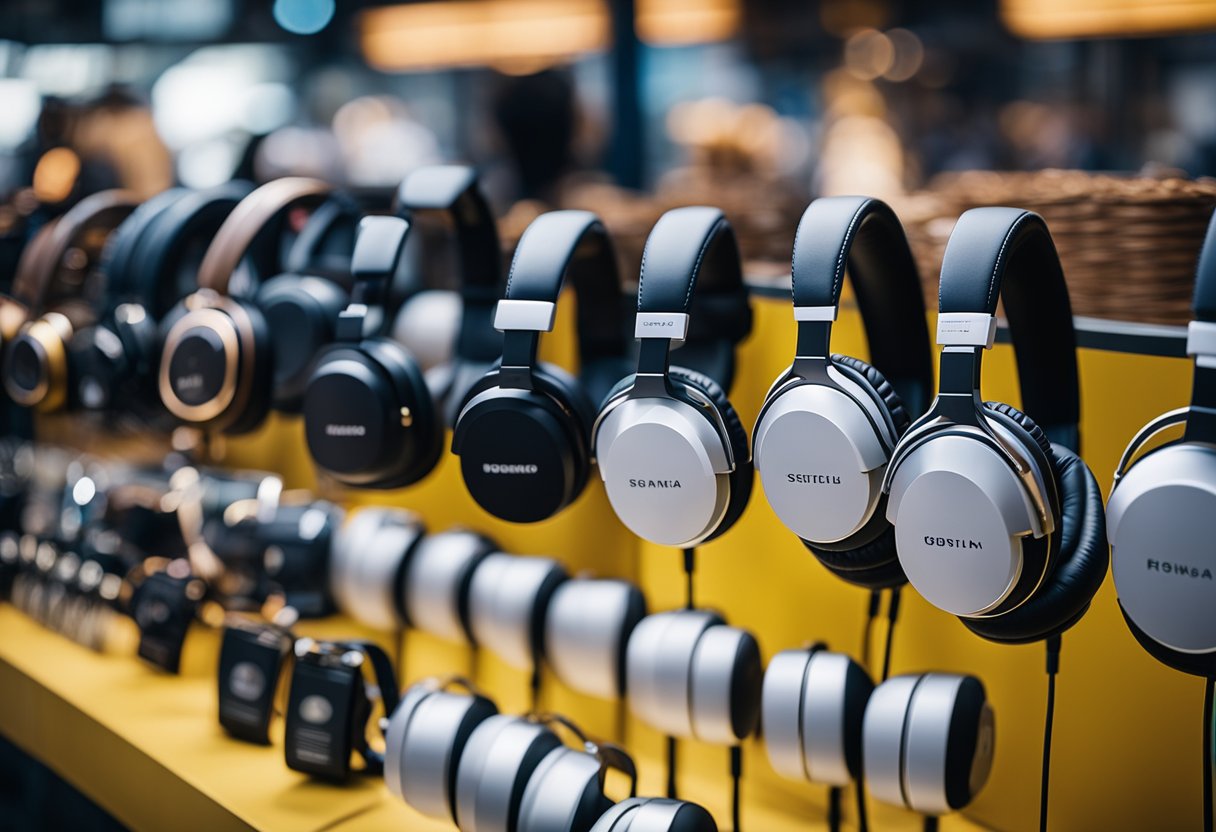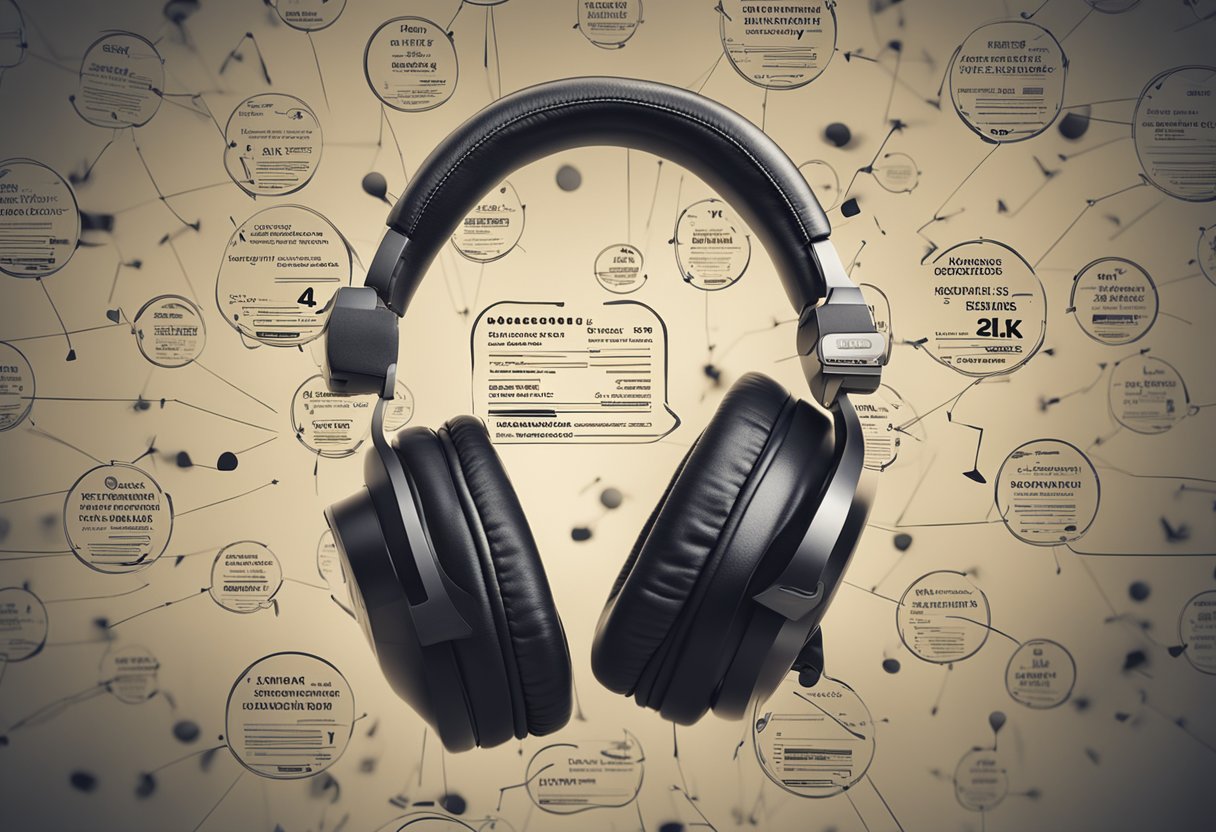Headphones have become an essential part of modern life. They are used for various purposes, including listening to music, watching movies, making calls, and even playing video games. There are different types of headphones in the market, ranging from earbuds to over-ear headphones, each with its own unique features and benefits.
Understanding headphones is crucial to choosing the right one for your needs. Quality headphones can provide numerous benefits, including noise cancellation, improved sound quality, and comfort. They can also be used to improve productivity, reduce stress, and enhance the overall listening experience. However, it is important to note that there are also potential drawbacks to using headphones, such as hearing damage and social isolation.
Key Takeaways
- Headphones are an essential part of modern life, used for various purposes.
- Quality headphones can provide numerous benefits, including noise cancellation, improved sound quality, and comfort.
- It is important to choose the right headphones for your needs and be aware of potential drawbacks such as hearing damage and social isolation.
Understanding Headphones
Headphones are a popular audio accessory that allow users to experience high-quality sound in a personal and immersive way. They come in various types and sizes, ranging from earbuds to over-ear headphones. In this section, we will explore the different types of headphones, the key parts that make up headphones, and the technology behind them.
Types of Headphones
There are several types of headphones available in the market, each with its own unique features and advantages. The most common types of headphones are:
-
In-ear headphones: These are also known as earbuds and fit snugly inside the ear canal. They are lightweight and portable, making them ideal for on-the-go use.
-
On-ear headphones: These headphones sit on the ears and are held in place with a headband. They are larger than in-ear headphones and offer better sound quality.
-
Over-ear headphones: These headphones completely cover the ears and offer the best sound quality and noise isolation. They are ideal for use in noisy environments.
-
Wireless headphones: These headphones connect to devices via Bluetooth and eliminate the need for wires.
-
Noise-canceling headphones: These headphones use advanced technology to cancel out external noise, providing a more immersive listening experience.
Key Parts of Headphones
Headphones are made up of several key parts that work together to deliver high-quality sound. The most important parts of headphones are:
-
Driver: The driver is the part of the headphone that converts electrical signals into sound waves. There are different types of drivers, including dynamic, planar magnetic, and electrostatic.
-
Earpad: The earpad is the part of the headphone that rests against the ear. It provides comfort and helps to isolate sound.
-
Headband: The headband is the part of the headphone that rests on top of the head. It provides support and helps to keep the headphones in place.
-
Cable: The cable connects the headphones to the audio source. It can be detachable or fixed.
Headphone Technology Explained
Headphone technology has come a long way in recent years, with new features and advancements being introduced regularly. Some of the most popular headphone technologies include:
-
Wireless earbuds: These are small, wireless earbuds that connect to devices via Bluetooth. They offer a more portable and convenient alternative to traditional headphones.
-
True wireless earbuds: These are similar to wireless earbuds but do not have any wires at all. They are the most portable and convenient type of headphone.
-
Bluetooth codecs: These are audio codecs that improve the quality of wireless audio transmission. They include aptX, LDAC, and AAC.
In conclusion, headphones are a versatile and essential accessory for anyone who loves to listen to music or audio content. By understanding the different types of headphones, their key parts, and the technology behind them, users can make informed decisions when choosing the right headphones for their needs.
Benefits of Quality Headphones
Quality headphones provide a range of benefits that enhance the listening experience and protect the user’s health and safety. Here are some of the benefits of using quality headphones:
Enhanced Sound Quality
Quality headphones offer a superior sound quality that allows users to enjoy music, videos, and other audio content with greater clarity and detail. They provide a more immersive listening experience that enhances the user’s enjoyment of the content and allows them to appreciate the nuances of the sound.
Noise-Canceling Features
Noise-canceling headphones are particularly beneficial for people who work or study in noisy environments. They use advanced technology to block out external noise, allowing the user to concentrate on their work or studies without being distracted by background noise. This can help to reduce stress and improve concentration, leading to better productivity and performance.
Wireless Convenience
Wireless headphones provide greater convenience and flexibility than traditional wired headphones. They allow users to move around freely without being tethered to a device, making them ideal for use during exercise or other physical activities. They also eliminate the risk of tripping over wires or getting tangled up in them, reducing the risk of accidents and injuries.
Health and Safety Advantages
Using quality headphones can help to protect the user’s hearing and reduce the risk of ear damage. They allow users to listen to audio content at a safe volume without the risk of exposure to loud noises that can cause hearing loss or other health problems. Additionally, noise-canceling headphones can help to reduce the risk of stress and other health problems associated with exposure to excessive noise levels.
In summary, quality headphones provide a range of benefits that enhance the listening experience and protect the user’s health and safety. They offer superior sound quality, noise-canceling features, wireless convenience, and health and safety advantages that make them a valuable investment for anyone who enjoys listening to music, videos, or other audio content.
Practical Uses of Headphones
Headphones are versatile devices that have a wide range of practical uses. They are not just for listening to music, but can also be used for communication, productivity, and concentration. In this section, we will explore the different practical uses of headphones.
For Music and Entertainment
One of the most common uses of headphones is for listening to music and other forms of entertainment. With headphones, users can enjoy their favorite music, movies, and games without disturbing others. Headphones provide a more immersive experience as they block out external noise and allow the user to focus on the audio.
For Communication
Headphones are also useful for communication. They can be used for making phone calls, video calls, and for participating in online meetings. With headphones, users can hear the other person more clearly and reduce background noise. This makes it easier to communicate effectively and reduces the chances of miscommunication.
For Productivity and Concentration
Headphones can also be used to increase productivity and concentration. They are useful for blocking out distractions in noisy environments, such as open offices or public spaces. Some headphones are designed specifically for noise-cancellation, which can help users focus on their work.
In addition to music and entertainment, headphones can be used for listening to audiobooks, which is a popular way to consume books while on the go. Audiobooks can be downloaded on a smartphone or tablet and listened to through headphones.
Overall, headphones are versatile devices that can be used for a variety of practical purposes. Whether it is for music and entertainment, communication, productivity, or concentration, headphones provide a convenient and effective way to improve the user’s experience.
Choosing the Right Headphones
When it comes to choosing the right headphones, there are several factors to consider. The following subsections will help you assess the sound performance, consider design and comfort, and evaluate durability and battery life.
Assessing Sound Performance
One of the most important factors to consider when choosing headphones is sound performance. Quality headphones should deliver clear and balanced sound across all frequencies. Look for headphones with a wide frequency response range, which indicates that they can produce a range of low and high frequencies. Additionally, consider the soundstage, which refers to the perceived spatial location of instruments and vocals in a recording. Headphones with a good soundstage can provide a more immersive listening experience.
Considering Design and Comfort
Headphone designs come in various styles, including over-ear, on-ear, and in-ear. Over-ear headphones are typically the most comfortable as they distribute the weight of the headphones over a larger area. On-ear headphones are more compact and lightweight, making them a good option for travel. In-ear headphones are the most compact and portable, but they may not be as comfortable for extended periods of use.
Comfort is also important when choosing headphones. Look for headphones with soft padding and a comfortable headband. Additionally, consider whether you want headphones that are water-resistant or sweat-resistant if you plan to use them while exercising.
Evaluating Durability and Battery Life
Durable headphones are essential if you plan to use them frequently. Look for headphones made with high-quality materials that can withstand wear and tear. Additionally, consider the length of the headphone cord and whether it is detachable.
Battery life is also an important factor to consider, especially if you plan to use your headphones for extended periods of time. Look for headphones with a long battery life and a fast charging time. Additionally, consider whether the headphones have a low battery indicator to help you keep track of the remaining charge.
In conclusion, when choosing headphones, it’s essential to consider factors such as sound performance, design and comfort, durability, and battery life. By assessing these factors, you can find headphones that meet your needs and provide an enjoyable listening experience.
Potential Drawbacks
While headphones offer many benefits, they also come with some potential drawbacks that users should be aware of. Here are a few of the most common issues:
Risk of Hearing Damage
One of the biggest concerns with headphones is the risk of hearing damage. According to the World Health Organization, exposure to noise levels above 85 decibels for prolonged periods can cause hearing loss. Many headphones are capable of producing sound levels well above this threshold, particularly when used at high volumes. This can put users at risk of hearing damage, particularly if they use their headphones frequently or for extended periods.
To mitigate this risk, users should consider using headphones with volume-limiting features or taking regular breaks from listening to music. They should also be careful not to turn up the volume too high, particularly when listening in noisy environments where it can be difficult to hear.
Issues with Battery Dependence
Another potential drawback of headphones is their dependence on batteries. Many wireless headphones and earbuds rely on batteries to function, which means they need to be charged regularly. This can be inconvenient for users who forget to charge their headphones or who need to use them for extended periods.
To avoid this issue, users can consider purchasing headphones with long battery life or carrying a backup battery or charger with them. They can also consider using wired headphones, which do not require batteries.
Challenges with Connectivity
Finally, some users may experience challenges with connectivity when using wireless headphones or earbuds. Bluetooth headphones, in particular, can be prone to connectivity issues, particularly when used in areas with a lot of wireless interference. This can result in dropped connections, poor sound quality, or other issues.
To address this, users should ensure that their headphones are fully charged and that they are within range of their device. They can also try moving to a different location or using headphones with better connectivity features.
Headphones in the Marketplace
Headphones have become an essential accessory for music lovers, gamers, and professionals alike. With so many brands, models, and price points available in the market, it can be overwhelming to choose the right one. Here are some factors to consider when comparing brands and models, understanding price points, and identifying value in features.
Comparing Brands and Models
When comparing brands and models, it’s important to consider the quality of the sound, comfort, durability, and design. Some of the most popular brands in the market include Bose, Sony, Sennheiser, and Audio-Technica. These brands offer a variety of models ranging from noise-canceling headphones to wireless earpieces. It is important to note that different models have different features, and one should choose the model that best fits their needs.
Understanding Price Points
Headphones come in a wide range of prices, from budget-friendly to high-end luxury models. The price point of a headphone depends on several factors, including the brand, model, and features. Generally, high-end models offer better sound quality, noise-canceling technology, and more advanced features, while budget-friendly models offer basic features and sound quality. It is important to identify the features that are essential and prioritize them when making a purchase.
Identifying Value in Features
When identifying value in features, it’s important to consider the features that are essential and the ones that are nice to have. Some essential features include noise-canceling technology, wireless connectivity, and comfortable design. Nice-to-have features include voice assistants, touch controls, and long battery life. It is important to identify the features that are essential and prioritize them when making a purchase.
In conclusion, headphones are a valuable accessory for music lovers, gamers, and professionals. When choosing a headphone, it is important to consider the brand, model, price point, and features. By prioritizing essential features and identifying value in features, one can find the right headphone that meets their needs and budget.
Frequently Asked Questions
What are the primary advantages of using headphones for students?
Headphones can be a valuable tool for students, especially those who need to study in noisy environments. With headphones, students can listen to music or white noise to block out distracting sounds and improve concentration. Additionally, headphones can help students to retain information better by allowing them to listen to lectures or audiobooks at a comfortable volume without disturbing others.
How does using a wireless headset benefit users?
Wireless headphones offer a range of benefits over traditional wired headphones. One of the primary advantages is the freedom of movement they provide. Without wires to worry about, users can move around freely while listening to music or taking calls. Additionally, wireless headphones often offer better sound quality, noise-cancellation, and battery life than wired headphones.
Can listening to music with headphones while sleeping be beneficial?
While some people find it helpful to listen to music or white noise while sleeping, it’s important to be cautious when using headphones in bed. Sleeping with headphones on can increase the risk of ear infections, and can also be a safety hazard if the cord becomes tangled around the user’s neck. If you do choose to listen to music while sleeping, it’s best to use wireless headphones or earbuds, and to keep the volume at a safe level.
What are the potential downsides to using wireless or Bluetooth headphones?
While wireless headphones offer many benefits, there are also some potential downsides to consider. One of the primary concerns is the risk of electromagnetic radiation exposure, which some studies suggest may be linked to cancer. Additionally, wireless headphones can be more expensive than wired headphones, and may have shorter battery life.
In what ways do headsets improve productivity and focus in the workplace?
Headsets can be a valuable tool for improving productivity and focus in the workplace. By blocking out distracting sounds and allowing users to listen to music or white noise, headsets can help to create a more productive work environment. Additionally, headsets with built-in microphones can make it easier to communicate with colleagues and clients during conference calls or video meetings.
What are the distinct benefits of using in-ear versus on-ear headphones?
In-ear headphones are a popular choice for their portability and noise-isolation capabilities. They are also less likely to cause discomfort during extended use. On-ear headphones, on the other hand, often offer better sound quality and a more immersive listening experience. They may also be more comfortable for users who wear glasses or have sensitive ears. Ultimately, the choice between in-ear and on-ear headphones comes down to personal preference and intended use.





